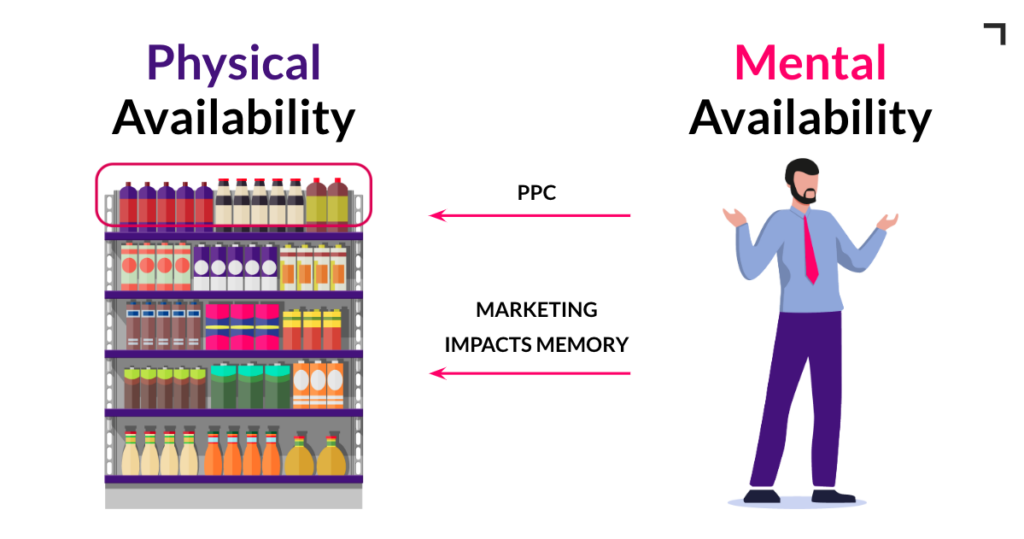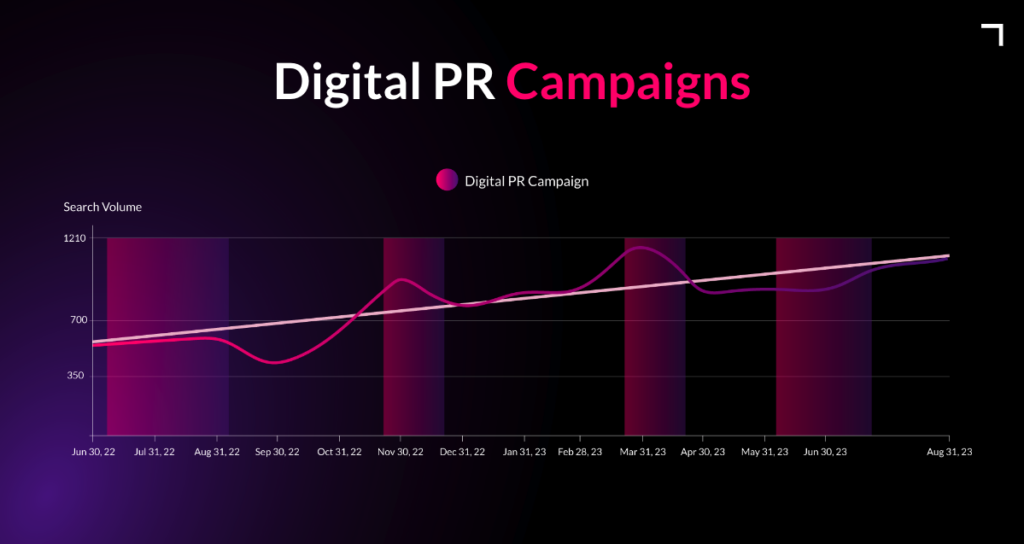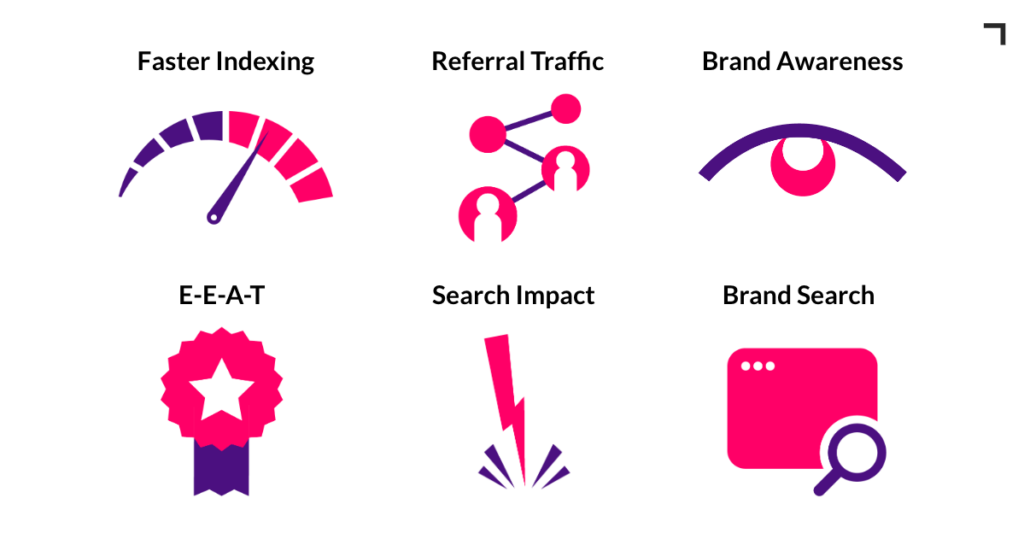How KPIs can take your digital PR campaign from zero to hero
Digital PR

There is a saying in marketing: Effectiveness first, efficiency second.
And this is where SEO agencies struggle because it is the worst sell in marketing.
‘Buy today and get results in 6 to 12 months…and we won’t guarantee them’.
Except, SEO doesn’t have to be like this.
Today, we measure the success of SEO in traffic and rankings. And we do this as an industry because Google has encouraged this with their free analytics software tools.
But no CFO or investor cares about traffic and rankings; they care about sales, profit and growth.
And here lies a fundamental flaw with SEO: our goals must be aligned with business goals.
Too many SEOs measure performance in methods that are not aligned with brand growth.
Traffic is vanity. Profit, sales and growth is vanity.
So, let’s give brands what they want.
Thanks to the Ehrenberg Bass Marketing Institute, we know how brands actually grow.
Following years of research, they discovered that brands grow through sales, and sales happen when 2 assets are increased.
They are mental and physical availability.
Mental availability- the likelihood of a brand being thought of in a buying situation.
Physical availability- the ease and convenience of buying a product or service.
In a nutshell, tell more people you exist and be easy to buy from.
But how does SEO deliver on this goal?

If the goal is to tell more people you exist and also to be easy to buy from, then the model is quite simple.
Create the best product and service pages and try to rank for buyer intent terms.
Use digital publicity to tell people you exist and build links.
And this is what digital PR fueled by SEO looks like.
Which sounds great, but how do you measure its effectiveness?
Famed marketers James Hankins and Les Binet created the metric share of search as a brand proxy.
The idea is pretty simple. You gather the brands you want to compete against into a list.
Figure out their brand traffic and determine the percentage share you have from the total brand traffic.
Voila, you have your share of search.
This is important because data suggests that share of search is a leading marketing indicator.
It tells you of the likely future sales because people are more likely to search for brands they have purchased from or are interested in buying from.
This matters because if your search share is going down, fewer people are likely to buy from you in the future.
But that’s just brand search.
Outside of brand search exists a huge number of undefined brand searches.
These are searches that exist where a person is looking for a solution to a problem they have.
They may be already aware of brands that solve this problem but are using search to look at all their options.
Or perhaps they are looking into their problem, totally unaware of solutions. And want to empower themselves with information.
Either way, if you capture as much non-brand buyer intent search, you’ll reach those researching the category.
And just like share of brand search, you can increase your share of buyer intent search as well.
This gives any SEO 2 easy-to-use metrics.
Share of brand search and share of buyer intent search.
Increasing these metrics will help you grow, which should be your focus.
As I’ve stated, digital PR fuels SEO.
But how?
It fuels both the share of brand search and the share of buyer intent search.
And it does this in a range of ways.
The quality of the links is what stands out. These are links that mention the brands we work for, and they are links that add immediate impact.
This leads to higher rankings for non-brand search terms, and we also see an increase in brand search terms as well.
Our data shows that there is around a 10 or 20% increase in brand search as a result of digital PR campaigns.
How? This is a result of being promoted in the media. You get seen by a heck of a lot of people, and inevitably, this means that some people will search for your business, and others will click through any links.
But do brand mentions do anything else?

We all know the power of AI and how it will shape our world, but few of us have considered how it will affect SEO.
Over the years, many of us involved in SEO and PR have long shouted about the importance of brand mentions, but only now, with the emergence of LLM (large language models), are we starting to think of these as powerful.
LLMs are trained on data and information from the largest websites in the world, and yes, as this technology improves, we can see the importance of how a brand is featured and mentioned in the media.
When you measure SEO differently, you start to look at SEO tactics through a different lens.
If we want profit, sales, and growth, we need to measure SEO in terms that align with this aim.
Share of search gives SEO focus; with that focus, you target the right terms for growth and acquire the best links to fuel this growth.
SEO becomes a marketing method that improves traffic and brand search/ brand exposure.
The triple benefits of SEO make it one of the most ignored yet powerful channels.

At JBH we’ve been on a mission to take share of search to the masses.
Why? Because when we have a single measurement of effectiveness that aligns with the rest of marketing, everything gets a lot easier.
Stakeholders can see how their whole marketing efforts are working, with share of brand and share of buyer intent search.
And so our first big event took place at Brighton SEO in the UK.
During their September event, I took to the main stage to tell the UK SEO community about share of search.
But it hasn’t ended there.
Myself and one of the JBH founders Jane Hunt travelled to San Diego, for the first US version of Brighton SEO.
Here, we introduced Share of Search to the US and went even further, showcasing how you can use it combined with SEO tactics.
Both talks have been hailed as some of the best SEO presentations they’ve seen.
My only question to you is this.
What are you waiting for?
Make the switch to SEO fuelled by digital PR.
You won’t regret it.